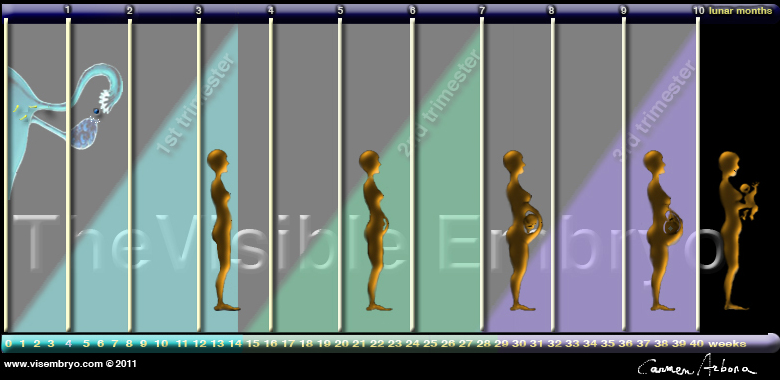|
|
Developmental Biology - Stem Cells
Does Time Modify the Affect of Proteins?
Protein concentrations over time change, does this affect the fate of stem cells?...
Do protein concentrations that vary over time affect biology? It's a question biologists are only recently beginning to address. Their findings increasingly reveal random temporal changes in the amount of certain proteins play a direct and significant role on biological processes.
In a new study published in Molecular Systems Biology, researchers at the lab of David Suter at EPFL found temporal fluctuations in protein concentrations determine the type of cell that embryonic stem cells will become.
The scientists studied two important transcription factors, SOX2 and OCT4 whose levels in embryonic stem cells change over time. Both of these transcription factors are important for embryonic stem cell self-renewal and differentiation (or "fate") into specific cell types.
To monitor their temporal fluctuations, the team carried out sophisticated genome engineering, generating five knock-in "reporter" genes in a single line of embryonic stem cells. These are genes that are attached near a gene of interest (in this case the genes for SOX2 and OCT4) and produce a visible signal - e.g. fluorescent light - when the target gene is expressed in a cell, thus "reporting" when it produces its corresponding protein.
Using this method, researchers monitored the fluctuations of SOX2 and OCT4 over time in living cells and determined how these fluctuations impact the fate of embryonic stem cells.
Researchers found small changes in levels of either SOX2 or OCT 4 transcription factors do impact cell fate:
• Only during the G1 phase — the first cell-growth phase.
• Increased SOX2 levels seem to "push" embryonic stem cells towards neuronal type cells — those cells coming from the neuroectoderm.
• Elevated OCT4 levels strongly direct cells towards both neuronal and non-neuronal differentiated cell types as high OCT4 levels increase accessibility of differentiation factors to the cell's chromatin.
"As fluctuations in transcription factor concentrations are to a large extent driven by the randomness of the gene expression cascade, these could set fundamental limits in our ability to redirect cell fate decisions for therapeutic purposes. Further work will be required to determine whether these fluctuations could be at least partially suppressed to mitigate their impact on controlling the fate of embryonic stem cells."
David M. Suter PhD, Sponsored Stem Cells Research Chair (UPSUTER), The Institute of Bioengineering (IBI), School of Life Sciences, Swiss Federal Institute of Technology, Lausanne, Switzerland.
Abstract
SOX2 and OCT4 are pioneer transcription factors playing a key role in embryonic stem (ES) cell self-renewal and differentiation. How temporal fluctuations in their expression levels bias lineage commitment is unknown. Here, we generated knock-in reporter fusion ES cell lines allowing to monitor endogenous SOX2 and OCT4 protein fluctuations in living cells and to determine their impact on mesendodermal and neuroectodermal commitment. We found that small differences in SOX2 and OCT4 levels impact cell fate commitment in G1 but not in S phase. Elevated SOX2 levels modestly increased neuroectodermal commitment and decreased mesendodermal commitment upon directed differentiation. In contrast, elevated OCT4 levels strongly biased ES cells towards both neuroectodermal and mesendodermal fates in undirected differentiation. Using ATAC-seq on ES cells gated for different endogenous SOX2 and OCT4 levels, we found that high OCT4 levels increased chromatin accessibility at differentiation-associated enhancers. This suggests that small endogenous fluctuations of pioneer transcription factors can bias cell fate decisions by concentration-dependent priming of differentiation-associated enhancers.
Authors
Daniel Strebinger, Cédric Deluz, Elias T Friman, Subashika Govindan, Andrea B Alber and David M Suter.
Acknowledgements
This work was supported by the Swiss National Science Foundation (PP00P3_1144828 and PP00P3_172905) to D.M.S, the Pierre Mercier Foundation and the generous support of the Fondazione Teofil Rossi di Montelera e di Premuda and an anonymous donor advised by CARIGEST SA. We thank the Swiss Federal Institute of Technology (EPFL), the Biomolecular Screening Facility (EPFL-BSF) and the EPFL Bioimaging and Optics Core Facility (EPFL-BIOP) for assistance in imaging and the EPFL Flow Cytometry Core Facility (EPFL-FCCF) for the fluorescence-activated cell sorting. We thank Antonio Meireles-Filho for help with ATAC-seq experiments.
The authors declare that they have no conflict of interest.
Return to top of page.
| |
|
Sep 27 2019 Fetal Timeline Maternal Timeline News
 Live imaging of SOX2 (GREEN) and OCT4 (RED) concentrations in mouse embryonic stem cells. CREDIT David Suter, EPFL.
|



